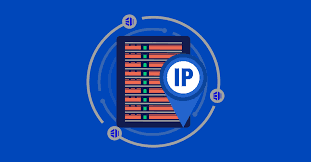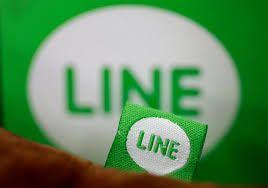5 Ways to Customize Your Onboarding Process to Individual Employees (and Why You Should)

LIKE.TG 成立于2020年,总部位于马来西亚,是首家汇集全球互联网产品,提供一站式软件产品解决方案的综合性品牌。唯一官方网站:www.like.tg
The majority of employers consider the onboarding process necessary, but many of them don’t seem to adequately prepare individual employees for a new position. Gallup found that only 12% of organizations do a great job of onboarding recent hires, and they often suffer as a result.
Research by Brandon Hall Group showed that organizations with a strong onboarding schedule improve productivity by 70% and new hire retention by 82%. When an employee is faced with a weak onboarding process, they’re more likely to lose confidence and quit within the first year.
But a generic process can be just as destructive as a poor or unstructured one. If individual employees are trained similarly to their peers, even if it’s for the same position, it could lead to inconsistencies in performance and knowledge. That’s because your employees aren’t alike.
The best employee onboarding examples have a few things in common: a diversity-first workplace, a longer or fully online onboarding process, and a customized onboarding schedule.
However, personalization isn’t just about putting a person's name in an email. It’s about understanding each individual’s needs to help them reach their goals. Fortunately, creating a customized onboarding process is easier and cheaper than ever before, thanks to technology.
Why is an Individual Employee Onboarding Process Important?
Great onboarding leads to lower turnover, an authentic work culture, and better engagement, but any good onboarding process can do that. Why is a custom process necessary?
Employers Should Foster Unique Skill Sets Instead of Stifling Them
Modern employees look for employers that champion diversity, but diversity goes beyond what a person looks like. It’s unlikely a born-and-raised Nigerian woman is going to have the same experiences as an American man. Listening to new perspectives and thoughts is beneficial, and not just for business reasons. With new ideas, humanity, in general, can grow and succeed.
However, if an employee is taught to keep their options to themselves, directly or indirectly, it prevents their personal growth and the potential growth of the company. Your employees won’t be able to lead a project if they can’t vocalize or beat the competition in your industry.
The onboarding process sets the tone for your employee's experience. It’s vital to encourage new hires to ask for help or give their opinion. Otherwise, they may feel it isn’t wanted.
Now, their special skill set, whatever that may be, will stay unknown to the rest of your team. Instead, ask the right questions to find the right candidate during the interview stage and affirm that their skills are needed during onboarding. Be clear that they can express themselves.
This guide was designed to help you navigate through those difficult tasks and help determine the right software for your organization, download our ebook now.
Download nowEmployees Respect Employers Who See Them as Individuals
Every single person, no matter how alike they may seem at first, is a unique individual with their own thoughts, feelings, and preferences. When individuals are treated as a collective, they often feel less important, but that doesn’t necessarily make our staff selfish, narcissistic, or hard to work with.
What this does mean is we value those who treat us as individuals rather than as part of the group. This is reflected in everyday life. If we group people and judge them based on what we assume they’ll be like, it causes unnecessary arguments, undue prejudice, and potential harm.
But If you listened instead of assuming, you’d be able to respond to what they actually believe and what motivated the individual to think this way. In the end, you’re showing that you respect them and their opinion, and respect is often rewarded with loyalty and kindness in return.
If you want to keep someone engaged in the onboarding process, you have to offer the same respect to your individual employees. Employers should prove to their employees that they made a great choice choosing their company.
Individual Employees Don’t Learn at the Same Rate
HR professionals agree that most onboarding processes should take three months, but two-thirds of hiring managers spend less than a month onboarding new employees. A short onboarding process leads to lower productivity, a toxic environment, and poor relationships.
While it makes sense why employers would want their new employees to learn a task as quickly as possible, it actually causes a lot of stress for you and your workplace. For example:
-
A rushed employee is more likely to make mistakes or not read the material properly. Someone who is unprepared or unable to perform adequately may feel like they aren’t meant for the job they occupy. In the end, they may develop imposter syndrome or quit.
-
If employees are confused and discouraged from asking for help, they may pretend they know how to complete a task. This may cause them to make more mistakes or ask their coworkers for help, which makes them appear incompetent when they aren’t.
-
An employee who falls behind needs help, not a threat. If an employee is left to fend for themselves, they’ll feel their employer doesn’t care about their personal wellbeing.
Onboarding processes should be slow and calculated. If you push too much too soon, you’re more likely to overwhelm new employees, which leads to negative results. A self-paced onboarding schedule that works with an individual's abilities and work style will enable a new hire to find their place sooner.
“As soon as we saw LIKE.TG’s Onboard demo, we knew this was the perfect solution for us. We loved that it was extremely simple and powerful out of the box, but that we could customize it with advanced capabilities to make it work in our company setting.”
How to Customize and Personalize Your Onboarding Process
Personalization works, whether you’re a small business or a large enterprise. However, you need to apply specific onboarding techniques to keep individual employees engaged.
1. Use Data and Tags Throughout the Onboarding Experience
If you use onboarding software (and if you don’t, you should), you know that you can create sign-up forms that include the user's information, such as name, email, and job title. Using tags, you can insert this information on the program’s welcome page and throughout modules.
When your employees are greeted by name on the dashboard, they’ll feel like your training programs were designed especially for them. However, personalization may not be enough, as person-to-person customization won’t prepare you for future hires or new training programs.
Using data, you can populate information and training preferences based on a person’s current role, where they’re located, industry, company, and team. With this data, you can tailor and simplify the onboarding experience for new and current employees transitioning into new roles.
2. Segment Individual Employees Based on Their Personality
Most personality tests aren’t accurate, but the DiSC assessment seems to match employees to the correct personality type 90% of the time. You can use the DiSC test to assess how a person manages conflict or takes direction, which is very important during a training session.
For example, a Dominate (“D” in DiSC) person will feel comfortable asking questions, while a Steady (“S” in DiSC) may be afraid to ask a question out of fear they’ll upset you or the recruiter.
Or, you could ask how they prefer to be managed, but a direct question could intimidate new employees. With DiSC, there aren’t any wrong answers or incompatible personality types.
DiSC is great at providing non-judgmental information you can use to train more effectively.
3. Further Segment Employees By Their Motivations and Goals
We all have career goals, and many of them are shared with our peers. Even so, that may not mean you and your coworkers are in a similar position. In fact, your peers may be much closer to the finish line than you, but that doesn’t mean you’ll never succeed at your goal.
It just means you need to take more steps to get there, and any onboarding program you’re a part of should be aware of your unique starting position. With this knowledge, your recruiters can help you succeed. If you’re the recruiter, use this knowledge to shorten or lengthen training.
For example, if your software engineer doesn’t know how to use one of the three programs they need, spend more time training in that one program. Then, provide them with a brief overview of the other two programs. Not only does this prevent boredom, but it also decreases downtime.
4. Communicate Using Personalized Emails and Messages
Individual employees may receive the same generic welcome email during the initial stages of the onboarding process, which can feel a little lazy. With all the data you’ve gathered, you should be able to offer personalized suggestions for their next steps or hold a conversation.
Here’s a few ways you can personalize email or message communication:
-
Show them what the next three months will look like with a schedule
-
Introduce them to their mentor if you’re using a mentorship program
-
Encourage them to take full advantage of their benefits and perks
-
Schedule an end-of-week meeting with their supervisor or mentor
-
Talk about something you have in common to show you’re listening
Building rapport with your employees is just as important as getting to know your clients. You’re putting your trust in them to help run your company, and it’ll only benefit you to truly know them.
5. Meet Your New Employees Face-to-Face (or Through Video)
Face-to-face communication, whether it’s done in person or through a screen, can help you build stronger connections with your team. It’s easier and quicker to problem solve when you’re speaking to someone in real-time, making Zoom or in-person training sessions more effective.
As another positive, in-person conversations are easier to personalize and can help potential hires feel like they’re having a casual meeting. While you should follow a loose script for consistency, make parts of the training more casual to encourage your employees to talk.
If time zone differences are preventing you from chatting live, record product demos or training modules that use the trainee's name. Use data to create the best video for their needs.
Author Bio
This article is written by a marketing team member at LIKE.TG. LIKE.TG is a leading provider of proven HR solutions, including recruiting, onboarding, employee communications & engagement, and rewards & recognition. Our user-friendly software increases employee productivity, delivers time and cost savings, and minimizes compliance risk.
This guide was designed to help you navigate through those difficult tasks and help determine the right software for your organization, download our ebook now.
Download now
LIKE.TG 专注全球社交流量推广,致力于为全球出海企业提供有关的私域营销获客、国际电商、全球客服、金融支持等最新资讯和实用工具。免费领取【WhatsApp、LINE、Telegram、Twitter、ZALO】等云控系统试用;点击【联系客服】 ,或关注【LIKE.TG出海指南频道】、【LIKE.TG生态链-全球资源互联社区】了解更多最新资讯
本文由LIKE.TG编辑部转载自互联网并编辑,如有侵权影响,请联系官方客服,将为您妥善处理。
This article is republished from public internet and edited by the LIKE.TG editorial department. If there is any infringement, please contact our official customer service for proper handling.


















